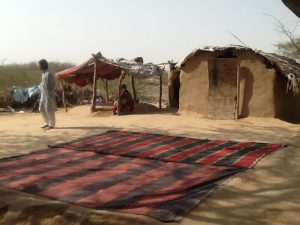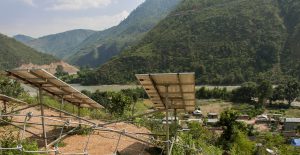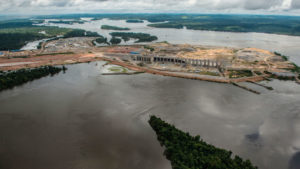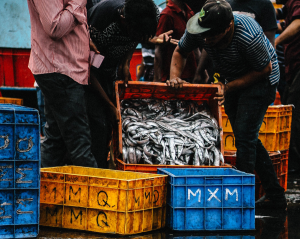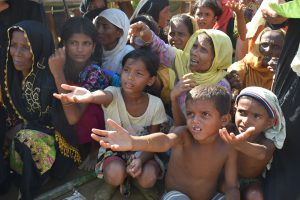About ten years ago, people in the small village of Gajoldoba on India’s stretch of the transboundary Teesta River started noticing significant changes in their environment.
Their fields weren’t yielding the same number of crops. The water level in the wells was dropping. And the fish – once so abundant that many families lived off their fish catch – were starting to disappear from the river.
Even more strangely, rainfall had begun to change. It fell in erratic bursts, incredibly heavy storms, and then nothing for weeks. The river also seemed to have grown more destructive – instead of eroding the land during the monsoon season as it usually did, the land was crumbling away year round. Homes had to be moved, and agricultural plots were disappearing into the hungry river.
Their land had even grown less fertile. Typically, during a monsoon, even as the land erodes, the flooded river is also depositing fertile silt across the farmland that boosts the next season’s crops. Now, instead of silt, the river was only leaving behind sand. For the first time ever, farmers had to dig into their meager savings to purchase fertilizer.
And Gajoldoba wasn’t alone. Up and down the length of the Teesta, from the mountainous regions in India to the flatlands of Bangladesh, villagers – most of them subsistence farmers and fishers – were experiencing the same problems. Many villagers reported that, due to the changing climate, they could no longer grow some of their traditional crops. And in the last decade, at least 15 different species of fish had all but disappeared from the river.
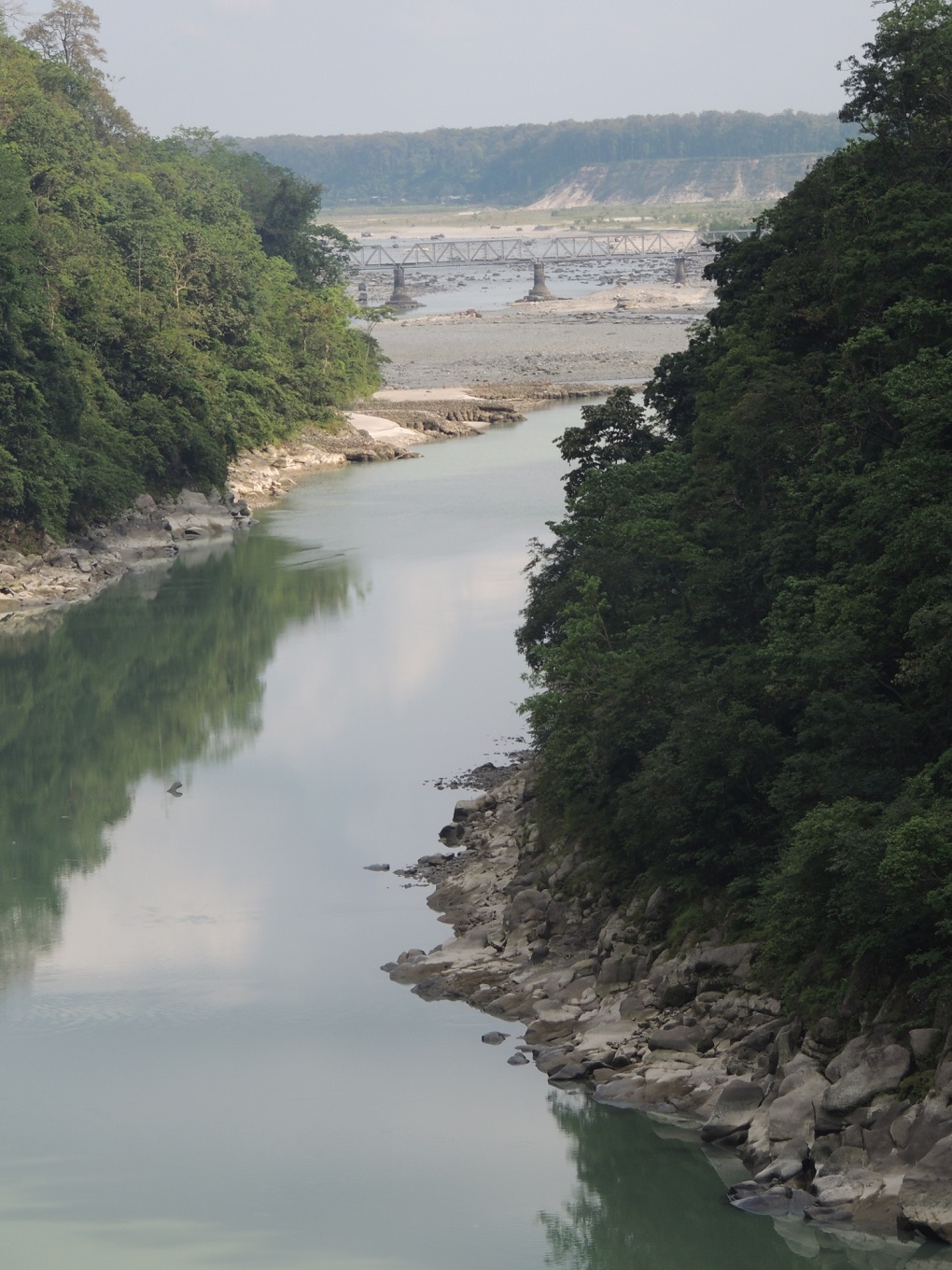
Read: Where are the Teesta waters?
We knew that the rush of hydropower development on the upper Teesta must be having impacts. So in 2016, we started having conversations with people living along the river in both India and Bangladesh. We wanted to hear what changes people had seen along their river in their own words. We wanted to hear how they understood the threats and vulnerabilities they faced and what solutions they envisioned, and to understand the full picture of impacts. We made a deliberate effort to reach out to women and encourage their participation.
As water-intensive agriculture and increasing industrialisation has placed more demand on the Teesta, and water availability has waxed and waned, mistrust has grown between Teesta-dependent communities in India and Bangladesh.
So we organized a cross-boundary exchange, bringing Bangladeshi community members and NGO activists to India. We hoped the visit would help them better understand the challenges upstream communities were facing, and would initiate a dialogue between the communities across the border.
We found that the culprits are multiple – an unholy trinity of climate change, hydropower dams and irrigation dams. The dams have changed the flow of the river, creating erratic water releases that are both driving erosion and drying the river out. The dams are also holding back nutrient-rich silt which would ordinarily fertilize farmers’ fields. This water, without its customary load of silt, becomes “hungry,” devouring the riverbanks to boost its silt content, which is also increasing erosion.
Read: The canal, the climate, and the Teesta
Up and down the river, these rivers communities are both fighting to cope with a river management regime that has pulled the rug out from under them. The fields and waters that put food on their tables – and in the mouths of their children – are literally disappearing before their eyes. And climate change is only ratcheting up the pressure.
These people deserve right to food, and they deserve a say in how their rivers are managed.
Alone, their voices are not enough. But together, they can take power and advocate for all communities, across borders, who rely on Teesta. Because the course of a river doesn’t halt at a border.
Now representatives from multiple villages have come together to form a committee to advocate for themselves. The villagers formed an ad hoc committee in September, with representatives from eight villages and one NGO partner. After finalizing their membership, they plan to meet in October to determine the committee’s direction.
They have already initiated talks with the Chief Engineer of the Teesta Barrage, which has caused widespread erosion and, villagers say, could be operated differently to minimize erosion. The committee is also considering asking the government to prepare a Teesta River Master Plan that would rely on strong participation from river communities. And communities are now sharing anti-erosion techniques like planting vetiver, a deep-rooted plant that can stabilize unstable soil along riverbanks.
One participant, Mohammad Ziaur Rahman from Banlgadesh, said, “Teesta chukti is meaningless if there is no water. If 34 dams are built, as planned, Bangladesh will turn into a desert. The six in Sikkim and the three in West Bengal have created havoc. The Teesta is nearly dead.” He favors the type of joint action the communities are now taking. “We need a movement from both sides of the border. We need to hold joint regional programs, such as a one-day protest (human chain) held simultaneously everywhere in the three regions of the Teesta Basin. This will draw attention of governments and the international communities.”
India and Bangladesh are facing an uncertain future, with the glaciers that feed many of their major rivers receding. Bangladeshis on the Teesta even blamed Indians upstream for “taking” their water. But when the villagers from both sides of the border came together, they saw that there were no enemies – only partners, communities that have relied on the bounty of the Teesta River for decades, if not centuries.
Each community, in its own way, is suffering from the effects of climate change and runaway dam development. But they are no longer isolated. They have come together and shared knowledge, and they are all committed to taking action. They recognize the true issues: climate change, and the upstream dams that are harming the river. We look forward to the next chapter.
International Rivers is a non-profit, non-governmental, environmental and human rights organization based in Berkeley, California, United States.
![<p>The Gajoldoba barrage remains mostly blocked during the lean season [image by: Jayanta Basu]</p>](https://dialogue.earth/content/uploads/2017/10/DSCN6626.jpg)

